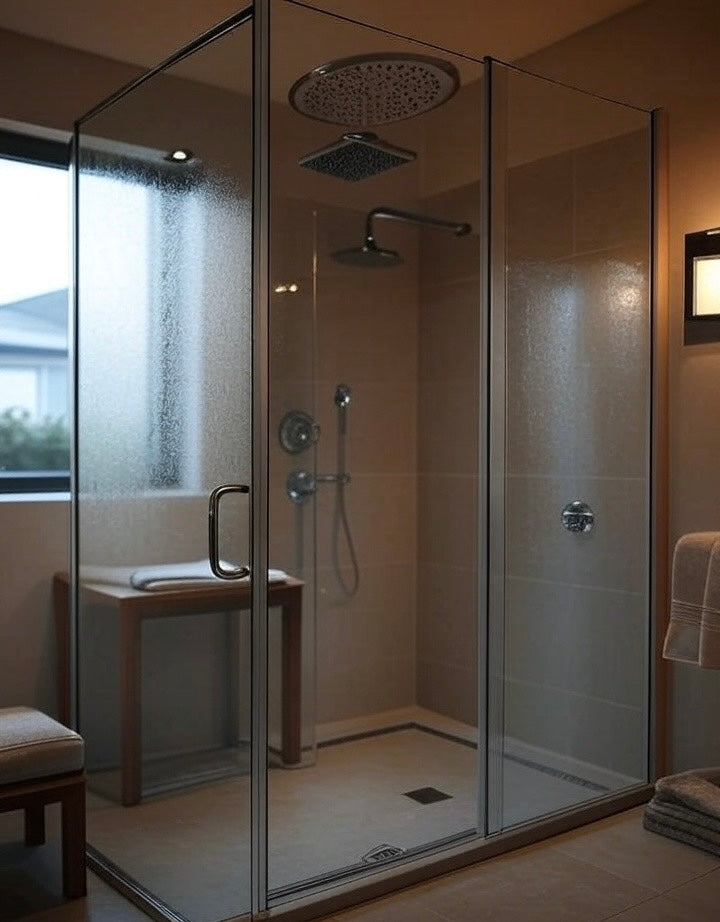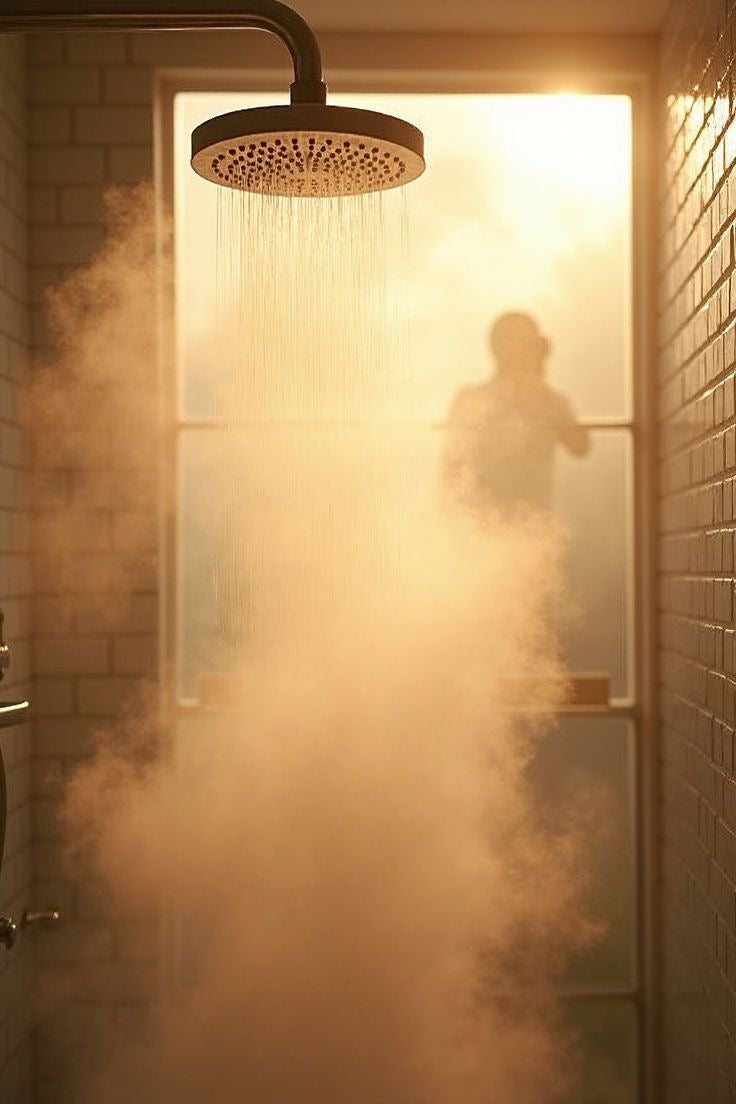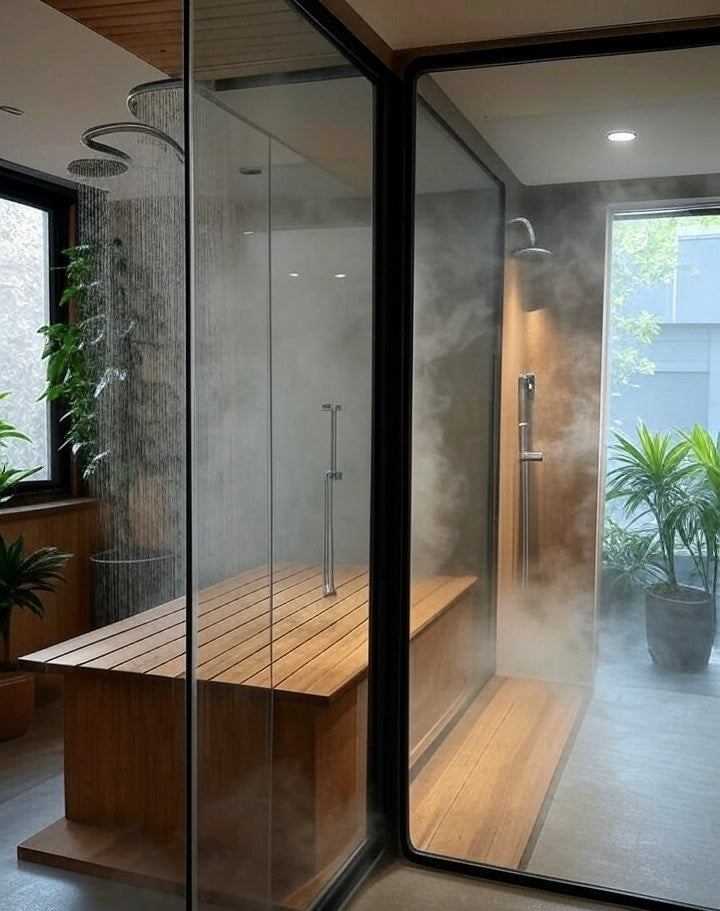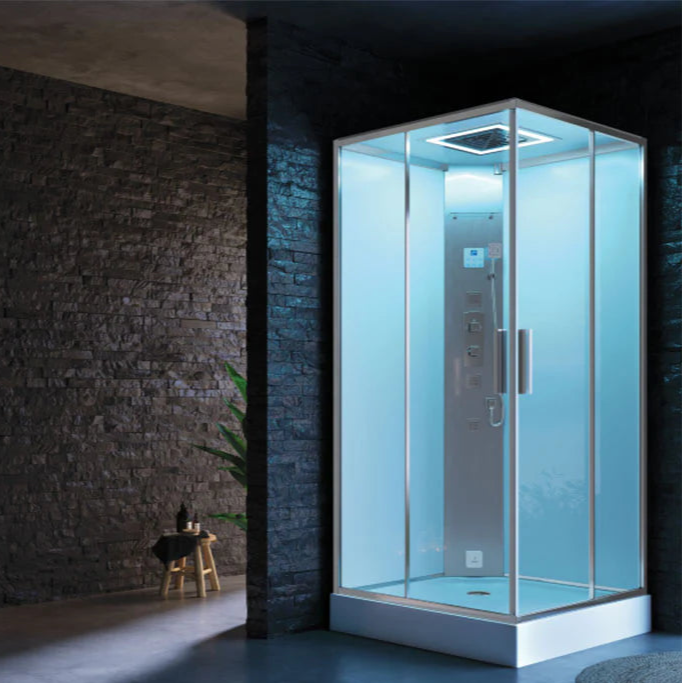Tired of boring showers? Upgrade to a Steam Shower—it’s like a Steam Room, Steam Bath, and spa all rolled into one! Short answer: Yes, it’s worth it. It boosts relaxation, clears your skin, and adds a touch of luxury. Keep reading for costs, benefits, design advice, and practical tips.

What is a Steam Shower?
A steam shower is a sealed shower enclosure fitted with a built-in steam generator.
It transforms your bathroom into a spa-like environment with soothing steam vapour.
Unlike standard showers, these units are designed to trap and maintain moist heat.
This makes for a deeply relaxing and therapeutic experience.
It’s the comfort of a steam room without leaving home.
How Does a Steam Shower Work?
Key Components of a Steam Shower System
Steam Generator
This essential device heats water to produce steam and is sized based on your enclosure’s volume.
It’s usually installed in a cupboard or nearby space and connected to the shower area.
Controls
Most systems come with digital or touchscreen controls.
These allow you to set the temperature, timer, and features like aromatherapy or lighting.
User-friendly and easy to customise.
Steam Head
This component delivers steam into the enclosure.
It’s placed low on the wall so the vapour rises gradually and spreads evenly.
Enclosure and Materials
The shower must be fully sealed to contain the steam.
Materials should be non-porous—like tile, acrylic, or glass—to prevent moisture absorption.
The ceiling is often angled to direct condensation away from your head.
Benefits of a Steam Shower
Health and Wellness Advantages
Steam showers offer several health perks that go beyond simple hygiene.
The moist heat helps clear airways and relieve congestion—perfect for colds and allergies.
It opens pores, helping with skin detox and leaving your face feeling soft and glowing.
The warmth also soothes sore muscles and stiff joints after exercise.
And the relaxing effect? Brilliant for stress, sleep, and mental clarity.
Other Advantages
-
Uses far less water than a full bath
-
May increase the value of your home
-
Humidity can help reduce wrinkles in hanging clothes
-
Indoor plants—like orchids—absolutely love the added moisture
Considerations Before Installing a Steam Shower
Space and Design Requirements
You’ll need a bathroom of suitable size and ceiling height.
Under 8 feet is ideal to contain steam effectively.
Many users opt to include bench seating for added comfort.
Walls and ceilings should be sealed with non-porous materials.
A sloped ceiling helps direct condensation away from your face.
Ventilation and Waterproofing
Proper ventilation is a must.
This prevents mould and mildew from forming in damp corners.
Ensure all joints and fixtures are sealed well, and consider a fan or vent system.
A vapour barrier behind tiles adds extra protection.
Electrical and Plumbing Needs
Power Requirements (220/240 Volts)
Steam generators typically require a 220/240 volt power supply.
This means a dedicated electrical circuit and professional installation.
Water Lines and Drain Lines
The unit connects to a cold water line and needs a drain line to handle any condensation.
All plumbing must be watertight and compliant with UK building regulations.
Professional Installation
It’s highly advised to hire a qualified electrician and plumber.
A tiling contractor will also help ensure the enclosure is perfectly sealed.
Avoid DIY here—it’s not worth the potential damage or hazards.
Maintenance and Common Issues
Regular Cleaning and Preventing Mould/Mildew
Wipe down walls and glass after each use to reduce moisture buildup.
Clean the enclosure weekly using non-abrasive products.
Leaving the door slightly open helps it dry properly.
Descaling the Steam Generator
If you live in a hard water area, mineral deposits can build up.
Descale the unit every few months using a manufacturer-approved solution.
Checking Seals and Door Gaskets
Inspect seals and door edges regularly.
Replace worn gaskets to keep steam from leaking out.
Addressing Noise and Odour Problems
Some generators can become noisy over time.
Unusual sounds or odours may mean it’s time for a clean or filter change.
Steam Shower vs. Regular Shower

Key Differences in Function and Experience
Steam showers fill the space with warm vapour, while standard showers simply rinse you with water.
The result is a more spa-like, luxurious experience.
Cost Comparison
Installation costs for steam showers are higher.
However, operating costs remain quite low—especially for short, efficient sessions.
Prefabricated units are cheaper than custom builds.
Water Usage Comparison
Steam showers use about 6–9 litres per session, compared to 60+ litres for regular showers.
This makes them surprisingly efficient for daily use.
Cost of a Steam Shower
Breakdown of Costs (Equipment, Labour, Materials)
-
Steam generator: £500–£1,500
-
Control panel, steam head, fittings: £200–£600
-
Tiling, enclosure, bench, waterproofing: varies greatly by design
-
Labour: £1,000–£2,500 depending on complexity
Factors Influencing Cost
Size, enclosure material, features like aromatherapy, and design choices all affect pricing.
Luxury finishes and lighting will raise the total cost.
Prefabricated vs. Custom Steam Showers
-
Prefabricated units: £1,000–£2,500
-
Mid-range with extras: £3,000–£5,000
-
Fully customised spa setups: £6,000+
Ongoing Utility Costs
Electricity costs are minor.
A 15-minute steam session usually adds only pennies to your electric bill.
Water use is far below standard baths or long showers.
Takeaways
-
A steam shower brings the best of a steam bath and spa into your home
-
It improves your health, skin, stress levels, and property value
-
Requires planning—professional installation is a must
-
Ongoing maintenance is minimal but important
-
It's not just about bathing—it's about living better






